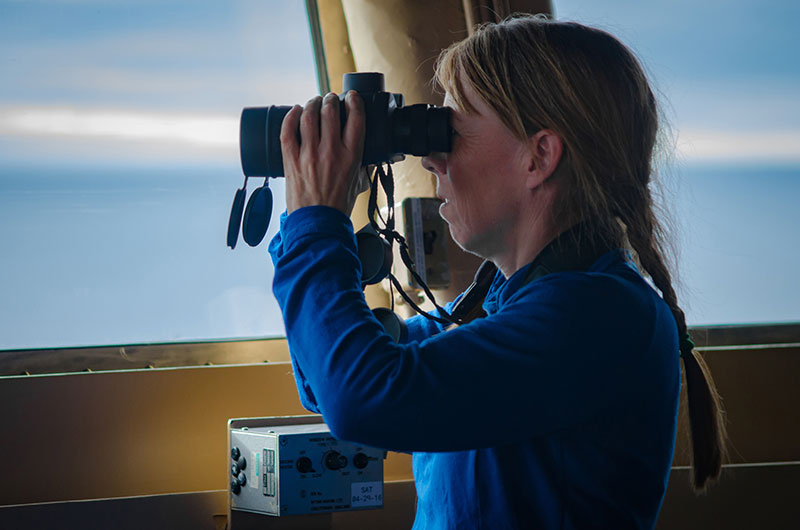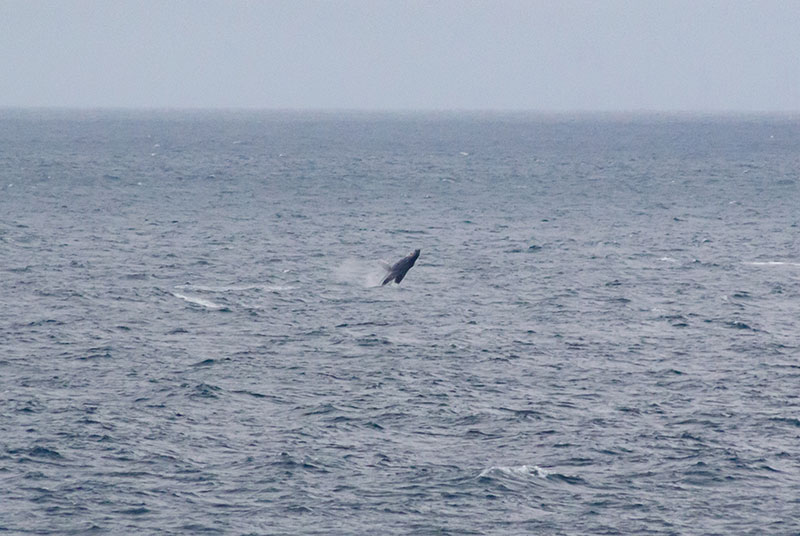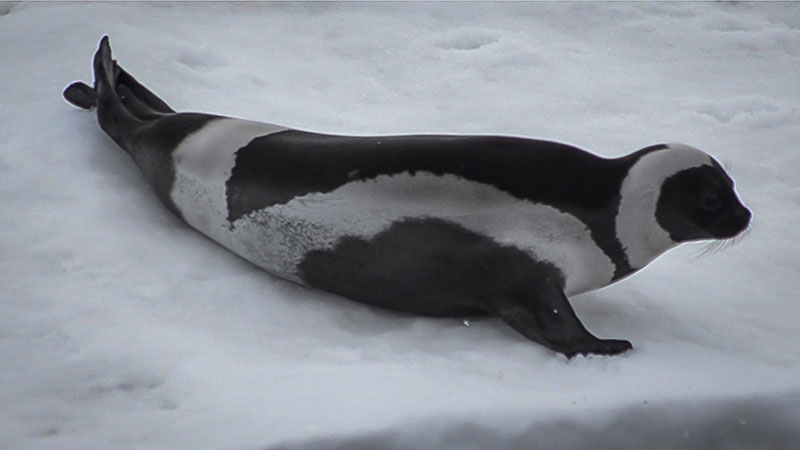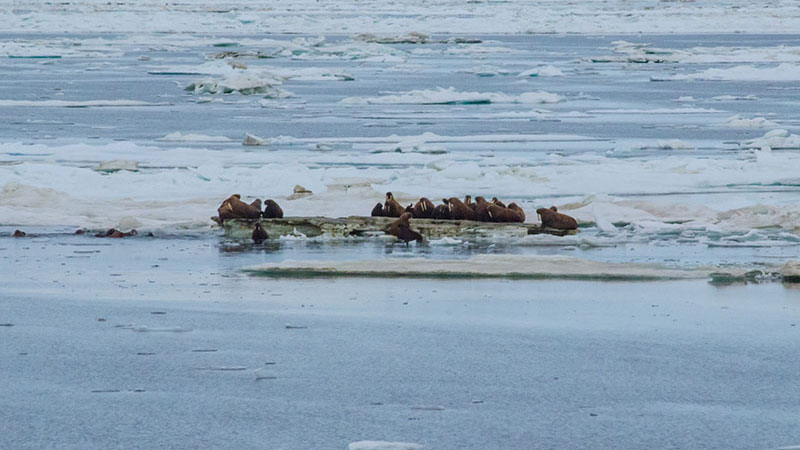
By Kate Stafford, University of Washington, Marine Mammal Scientist
July 10, 2016

Kate Stafford surveys the surrounding Arctic waters from the bridge of the U.S. Coast Guard Cutter Healy. Image courtesy of Caitlin Bailey, GFOE, The Hidden Ocean 2016: Chukchi Borderlands. Download larger version (2.6 MB).
As part of the Chukchi Borderlands expedition, a marine mammal watch is held on the bridge while we are underway. Because we can’t dictate where the ship goes, or how fast, our observations serve as indicators of which species are present in a region, but do not provide estimates of abundance or relative density of animals. Rather, we are interested in how the species composition changes as we move north from the Gulf of Alaska, through the Bering Sea, and into the unexplored high Arctic.
Because we will be repeating our transect on the way back to Seward six weeks later, there is also the possibility of seeing how things change as the season progresses. For instance, we might expect more sightings of sub-Arctic species (humpback, fin, and killer whale) in the Chukchi on our journey south than we saw six weeks earlier. Although there are regular aerial surveys out to 72 degrees North near the Alaskan coast and a mooring with a hydrophone to listen for animals on the Chukchi Plateau, there is very little information on what species occur this far north. Our projected maximum latitude for this expedition is 77.4 degrees North.

A young humpback whale shows off its breaching during our transit north. Image courtesy of Caitlin Bailey, GFOE, The Hidden Ocean 2016: Chukchi Borderlands. Download larger version (2.2 MB).
While most of the science party spent the first week at sea getting instruments ready, the marine mammal observation team (Kate Stafford, Erica Escajeda, and Jenny Stern) started work as soon as we left the dock in Seward. Despite the current 24 hours of daylight, the marine mammal watch happens from ~0600 or 0700 to 2300. Two observers at a time stand on the Healy’s bridge 20 meters above the water’s surface and scan with 7x50 binoculars to cover from 45 degrees to starboard to 90 degrees to port. We focus mainly on the port side because much of the ship operations occur on the starboard side and, as guests on the Healy bridge, we want to make sure we don’t interfere with any ship operations.
One observer looks around constantly while the second is responsible for both observations and data input. The data collected not only include the bearing, distance, species, and number of animals seen but also information on weather and viewing conditions. Fog, high winds, and waves can greatly impact the ability of observers to detect and identify animals. At 15 knots speed, the Healy covers one kilometer every two minutes which can make detecting animals that spend most of their lives underwater, surfacing only to breathe, quite difficult.

A beautiful ribbon seal rests on an ice floe. Image courtesy of Caitlin Bailey, GFOE, The Hidden Ocean 2016: Chukchi Borderlands. Download larger version (jpg, 466 KB).

A large herd of walrus use floating ice to haul out after swimming in Arctic waters. Image courtesy of Caitlin Bailey, GFOE, The Hidden Ocean 2016: Chukchi Borderlands. Download larger version (jpg, 3.2 MB).
Although our weather was mostly quite good during the transit from Seward to the Chukchi, we saw relatively few animals. Highlights included curious minke whales, killer whales just north of Unimak pass, and fur seals in the Bering Sea. Once we started to see ice, the pinnipeds reigned. Walrus as well as bearded and ringed seals were common and we’ve had two sightings of ribbon seals – a beautiful black and white seal. We’ve also been fortunate enough to see three polar bears. The third came bounding across the ice while we were stationary – nearly everyone got a good look before the bear headed off to a pan of thinner ice where several ringed seals were hauled out. The bear didn’t get very far out on the ice before the seals slipped down holes into the water and out of harm’s way.
Learn more about Arctic Marine Mammals.

This curious polar bear checked out the ship while we were stationary. Image courtesy of Caitlin Bailey, GFOE, The Hidden Ocean 2016: Chukchi Borderlands. Download larger version (3.3 MB).